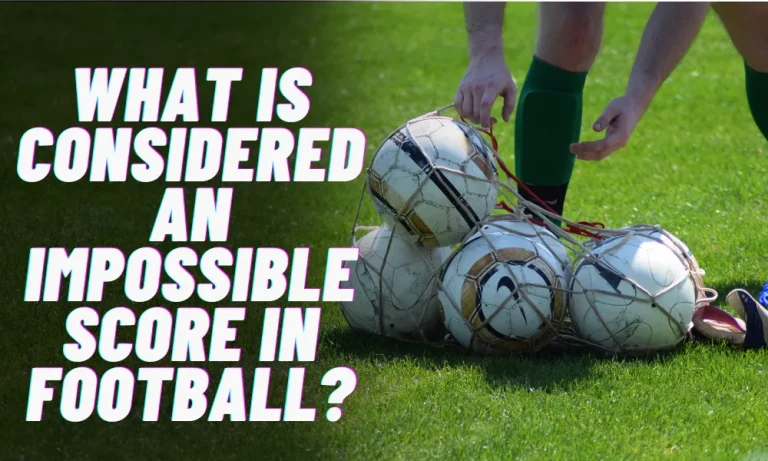Is There a 2-Minute Warning in College Football Games?
Is there a 2-minute warning in college football games? It’s a question that has puzzled many fans who are familiar with the dramatic tension it brings to NFL matchups. But when it comes to college football, things may not be as straightforward.
In this blog post, we’ll unravel the mystery and explore the unique world of college football rules to determine whether or not this adrenaline-fueled countdown exists on the collegiate gridiron. Get ready for an eye-opening journey into the fascinating realm of game structure variations between NFL and college football!
Understanding College Football Rules
College football and the NFL may share the same love for the game, but their rulebooks tell different stories. To fully grasp whether there is a 2-minute warning in college football games, it’s crucial to dive into the key differences between these two levels of play.
Game Structure Variations
In terms of structure, one notable difference lies in how time is divided. While NFL games consist of four quarters, college football breaks it down into two halves.
This distinction alone can have a significant impact on overall gameplay and strategies employed by teams.
Clock management also differs between the two leagues. In college football, clock stoppages occur during first downs to move chains or when players run out of bounds. These rules vary from those followed in professional matchups, where incomplete passes also result in clock stoppages.
Another factor that plays into timing variations is television broadcasting. College football often incorporates designated commercial breaks called “television timeouts.”
These interruptions disrupt the game flow and add an extra layer of complexity when considering the implementation of a traditional 2-minute warning system.
Importance of Exploring Presence or Absence
Understanding these nuances becomes essential when exploring whether there is indeed a 2-minute warning in college football games.
By analyzing rulebook disparities and examining real-world scenarios faced by coaches and officials at this level, we can gain valuable insights into why this particular element exists—or doesn’t—in collegiate play.
Time Management in College Football Games
When it comes to college football games, time management plays a crucial role in shaping the flow and intensity of play. Understanding the game structure differences between NFL and college football is key to unraveling the complexities of time management strategies employed at both levels.
Quarters vs. Halves: Game Structure Differences
In NFL games, four quarters divide the gameplay into manageable segments. Each quarter lasts 15 minutes, with breaks between them allowing teams to regroup and adjust their tactics.
On the other hand, college football follows a halves format where two periods of 30 minutes each make up an entire game.
Stoppages & Clock Management
Clock stoppages occur during various scenarios in college football games, such as incomplete passes or when players step out of bounds.
These stoppages offer opportunities for teams to catch their breath, plan their next moves strategically, and manage the remaining time effectively. Comparatively, clock management strategies may differ slightly between NFL and college due to these variations.
Television Broadcast Considerations
Television timeouts are essential factors influencing game flow and timing specifically at collegiate-level contests.
Designed commercial breaks disrupt momentum on-field but provide broadcasters valuable airtime for advertising revenue generation purposes. Implementing a traditional 2-minute warning system might clash with these existing television timeout structures.
Overtime Rules & Exceptions
While not directly related to time management within regulation playtime, overtime rules unique to college football are worth mentioning here briefly if relevant discussions arise throughout this exploration process.
Examining Existence or Absence of a 2-Minute Warning
To determine whether there is a 2-minute warning in college football games, we delve into multiple sources and perspectives.
From analyzing the official NCAA rulebook to gathering insights from coaches and officials, as well as exploring historical incidents or controversies, we aim to uncover the truth behind this intriguing question.
Official NCAA Rulebook Analysis
By scrutinizing specific sections within the NCAA rulebook that govern timing regulations, we can unveil any mentions related to a 2-minute warning.
This careful examination allows us to understand if such a provision exists or if other timing rules are implemented instead.
Interviews with Coaches & Officials
Gaining insights directly from college football coaches and officials provides valuable firsthand information regarding the absence of a 2-minute warning.
Their experiences on the field offer unique perspectives on how they manage time during critical moments towards the end of games.
Historical Perspective
Exploring past incidents or controversies where the absence of a 2-minute warning played a role helps us understand its impact on gameplay dynamics.
By delving into historical contexts, we can identify instances where teams faced challenges due to not having this traditional countdown system in place.
FAQs: Is There a 2-Minute Warning in College Football Games?
Q1: Why is there no 2-minute warning in college football games?
A: The absence of a 2-minute warning in college football can be attributed to the differences in game structure and timing regulations between NFL and collegiate play.
2: Are there any alternative time management mechanisms used in college football?
Yes, clock stoppages occur during specific scenarios like incomplete passes or players going out-of-bounds, providing opportunities for teams to strategize within limited timeframes.
3: Do television timeouts affect the implementation of a traditional 2-minute warning system?
Yes, television timeouts disrupt the game flow and are an integral part of broadcasting considerations, potentially conflicting with the use of a traditional 2-minute warning.
4: Is there anything mentioned about a 2-minute warning in the NCAA rulebook?
No specific mention of a 2-minute warning can be found in the NCAA rulebook governing timing regulations for college football games.
5: Have there been any historical incidents where not having a 2-minute warning impacted gameplay?
While not directly related to gameplay impact, exploring past incidents or controversies may shed light on how the absence of this countdown affected critical moments toward the end of college football games.
Conclusion
The presence of a 2-minute warning in college football games remains elusive. While the NFL has embraced this adrenaline-fueled countdown, the unique game structure and timing regulations in collegiate play have led to its absence. Exploring these differences adds to our appreciation for the intricacies that make each level of football captivating in its own way.



